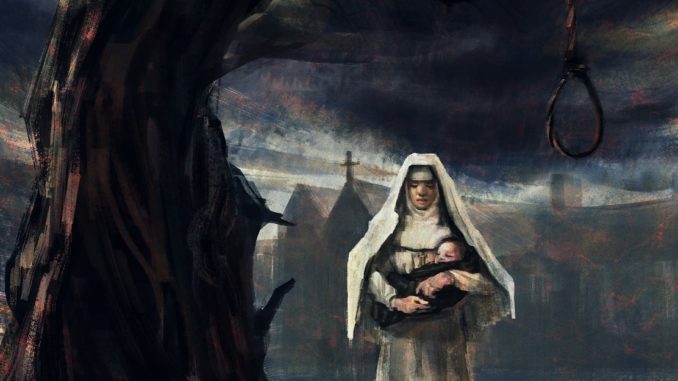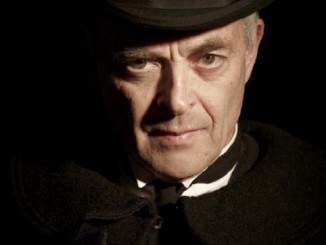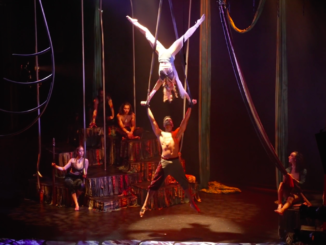
[The Woman in White]
Albert Belz’s Cradle Song adheres closely to the tried and true tropes of the horror genre: vengeful spirits, religion, a creepy setting, stranded youngsters making bad decisions. While offering little subversion for any diehard horror aficionados, there is great pleasure in watching a difficult genre handled expertly on stage. This is not the first time Belz has toyed with horror (his seminal Yours Truly is a riveting retelling of Jack the Ripper), but straight-faced attempts at this kind of storytelling remain elusive.
The set-up follows two young women who find themselves desperately seeking accommodation at a isolated nunnery in the middle of nowhere as they travel through Ireland on their big OE. Creepy gets even creepier as a mysterious figure known as Briar Faith begins to haunt them, and they must uncover the traumas that lie buried in the place’s history.
As the two backpacking young women, Briar Collard and Ariaana Osborne avoid the worst cliches of their character stereotypes. While the scenario contrives a few dumb decisions, the stakes are raised to realistic heights and their own immediate concerns and backstories are tied into the plot elegantly. Belz understands that no matter the genre, sympathetic and relatable characters remain paramount.
The two nuns in charge, played by Amanda Rees and Donogh Rees, offer a believability that grounds the horror in reality as well as the supernatural. While Amanda Rees brings a harsh, imposing severity to her presence, Donogh Rees is gentler, expressing guilt or warmth with the switch of a facial gesture. Their stories are handled as respectfully as possible, refusing to reduce them into stock caricatures.
Director Tainui Tukiwaho pulls all the tricks out of his bag to create a genuinely eerie production, fusing unsettling soundscapes with brief jolts of surprising stagecraft. Even the less squeamish audience members will come away with a newfound respect for the crew’s impressive ability to keep up with the demands of the script. Especially effective is the use of lighting outside the venue, through the stained glass windows, to toy with perceived time of day.
A somewhat pat climax undermines some of the genuine tension and stakes built up so well in the play, feeling a bit too neat and tidy. For a horror buff like myself, I was expecting a final shock or twist that never arrived, but, like the best horror stories, this one operates on a metaphorical level as well as the literal. The arc of the narrative is about redemption and absolution as much as frights and jumpscares and ghosts.
The nature of staging Cradle Song at the Corban Art Estate church for the premiere gives the show a site-specific immediacy that audiences will miss at the forthcoming Q season. Regardless, this is a must-see for fans of the genre from one of our most interesting and diverse contemporary playwrights. And it will no doubt be fascinating to see how the script’s hurdles are met in a new and less inherently ominous venue.
Cradle Song played Corban Estate Arts Centre 5-8 September, and transfers to Q Theatre 18 – 22nd September.




Leave a Reply